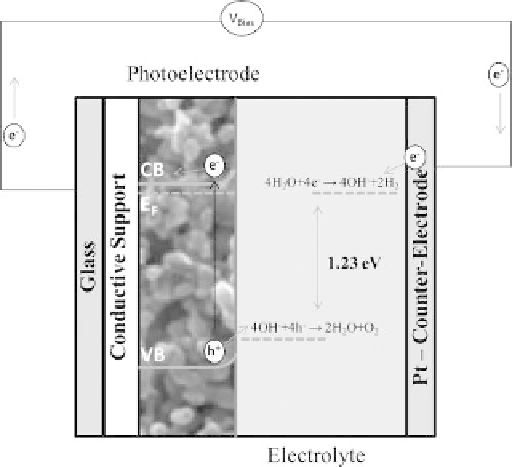Environmental Engineering Reference
In-Depth Information
Figure 10.2.4
Schematic representation of the relevant processes involved in the photo-hydrolysis of
water.
ii
)
hybrid systems with layered structures involving several different semiconductor
films stacked on top of each other (Figure 10.2.3c).
All the presented routes to convert solar energy into hydrogen show advantages
and disadvantages. Nevertheless, there is a consensus that the single photo-system is
the holy grail of PEC technology in terms of simplicity, packaging and overall system
costs (Krol et al., 2008).
10.2.2 Working principles of photoelectrochemical cells
for water-splitting
The principle of converting sunlight into hydrogen by water photoelectrolysis using
a single photon-system, taking as an example a n-type semiconductor in an alkaline
media, is illustrated in Figure 10.2.4.
The single-photon PEC system for water-splitting is composed of a semiconductor
photoelectrode that absorbs photons with sufficient energy to inject electrons from the
valence to the conduction band, creating electron-hole pairs - Equation 10.2.1.
2e
−
+
2h
+
Photon-induced electron-hole pair generation
2
hv
→
(10.2.1)
As sketched in Figure 10.2.4, the excited electrons percolate through the semiconduc-
tor layer reaching the counter-electrode, via the external circuit, to promote water
reduction at its surface - Equation 10.2.2 - while holes oxidize water in the semicon-
ductor surface - Equation 10.2.3 (Krol et al., 2008; Archer and Nozik, 2008). The

Search WWH ::

Custom Search